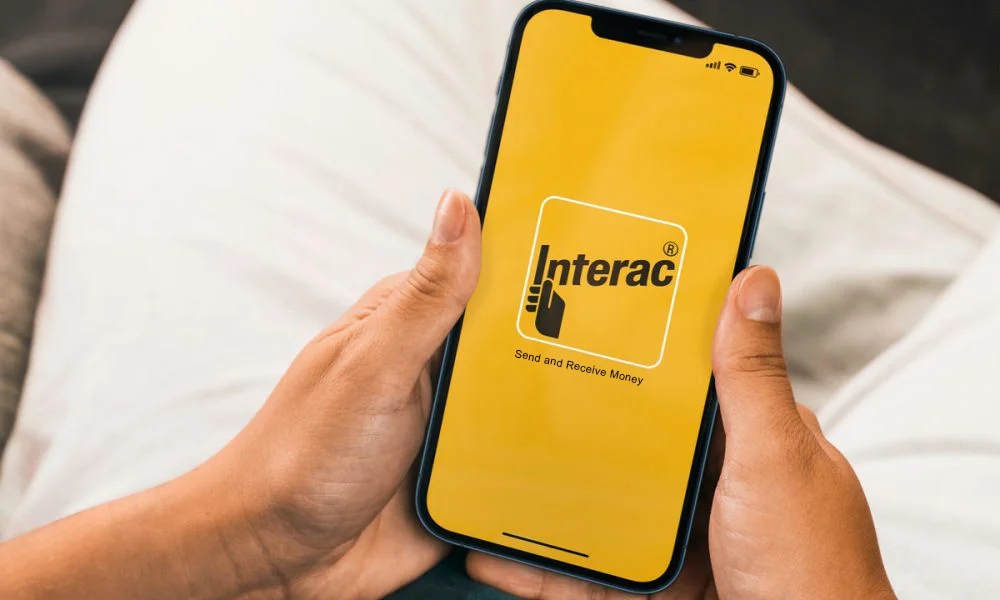How To Get Money From Interac E-Transfer?

Money transfer methods have evolved significantly with the advent of technology, making payments and receiving funds more convenient. Among these modern solutions, Interac e-Transfer is a popular choice in Canada, offering a blend of simplicity, speed, and security.
In an independent survey, the report shows that nearly 9 out of 10 (approx. 88%) Canadians use Interac e-Transfer to send or receive payments.
What Is Interac e-Transfer?
Interac e-Transfer is a fast, secure, and very convenient payment method in Canada to send and receive money from your bank account to someone else. Whether you want to pay your pending bills or pay for an emergency, Interac e-Transfer assists you in quickly sending money to an individual or business. You only need the recipient’s email address or mobile phone number registered with Interac.
Interac word relates to “debit” or “withdrawals,” and almost all Canadian banks and credit unions offer Interac e-Transfer service. It is one of the famous and first digital local peer-to-peer payment methods that claims fast payment disbursements in Canada. Interac e-Transfer is a Canadian interbank network service unavailable outside Canada.
How Does an Interac e-Transfer Work?
The steps to send money with Interact e-Transfer are:
- The sender initiates the transfer through their banking app or website.
- They enter the recipient’s email address or mobile phone number, the amount they wish to send, and, if required, a security question.
- The recipient gets a notification and answers the security question if needed.
- The funds are then deposited directly into the recipient’s bank account without the need for sharing personal banking details.
The steps to get money from Interac e-Transfer are:
- Notification: Receive an email or text message alert.
- Proceed: Click on the link within the notification.
- Select Your Bank: Choose your banking institution from the list provided.
- Login: Access your online banking.
- Deposit: Answer the security question if necessary, and deposit the money into your account.
Learn more here
What Do I Need to Do an Interac e-Transfer?
To send an Interac e-Transfer, you’ll need:
- An online banking account with a Canadian bank or credit union that offers Interac E-Transfer services.
- The email address or mobile phone number of the person or organization you’re sending money to.
- Enough funds are in your account to cover the transfer amount and any applicable fees.
Receiving money from Interac e-Transfer is even simpler – all you need is a bank account with a Canadian financial institution that supports Interac e-Transfers. You’ll get a notification prompting you to deposit the transfer, which you can do using your online banking.
What Can an Interac e-Transfer Be Used For?
Interac e-Transfer payment method is fast and secure, and you can use it for:
- Splitting the bill at a restaurant with friends.
- Sending gifts to friends and family.
- Paying for services directly to providers.
- Paying rent to your landlord.
- Transferring allowance to a college student.
- Paying your portion of a group gift.
- Settling invoices with small businesses or freelancers.
- Paying bills and invoices.
Above are the most common uses of Interac e-Transfer, but there are no usage bondages. You can use it as an independent payment method for personal and business transactions.
What Are the Advantages of Interac e-Transfer?
- Security: Interac E-Transfers are secure with bank-level encryption and no need to share personal banking details.
- Convenience: Transactions can happen anytime, anywhere, as long as you have internet access.
- Speed: Funds are usually available within minutes, making it an excellent option for urgent payments.
- Simplicity: The process is straightforward, requiring only the recipient’s email address or mobile phone number.
What Are the Disadvantages of Interac e-Transfer?
Interac e-Transfer indeed is a highly versatile, efficient, and faster payment method, but still, there are a few disadvantages, such as:
- Fees: There may be fees for sending or receiving money, depending on your bank and account type.
- Limits: Transactions cannot be reversed once the recipient has deposited the funds. Plus, there are restrictions on how much money you send or receive with Interac e-Transfer.
- Availability: Interac e-Transfer is not available for international payment transactions. Both sender and receiver must have a Canadian bank account registered with Interac.
Difference Between Interac e-Transfer and EFT in Canada
While both Interac e-Transfer and Electronic Funds Transfer (EFT) are effective payment methods in Canada to move money from one bank to another electronically, there are differences between both duo:
- Interac e-Transfer: is designed for small, personal transactions between individuals or payments to small businesses. It’s processed almost instantaneously and involves an email or SMS notification to the recipient.
- Electronic Funds Transfer (EFT): on the other hand, ETFs are commonly used for more significant corporate transactions or automated payments like payroll and direct debits. EFT processing times can be longer, and the system requires sharing bank account information between the sender and recipient, making it less ideal for casual transactions.
Want to borrow money? Apply for fastest e-Transfer payday loans with CashCorner to get funds in minutes
If you’re facing financial problems and don’t know where to turn, apply for instant e-transfer payday loans at CashCorner: 24/7 available, no documents required, and the best solution to all short-term cash needs.
Frequently Asked Questions (FAQs)
How much does Interac e-Transfer cost?
The cost of Interac e-Transfer depends upon your bank and may differ from one to another. However, some financial institutions, especially online banks, offer unlimited free e-transfers. Typically, Interac e-Transfer fees range from $0.50 to $1.50.
What is the Interac e-Transfer limit?
Interac e-Transfer has no minimum transfer limit, but the maximum e-transfer limit is capped between $3000 to $10,000 per day. However, business e-transfers offer higher limits up to $25,000.
What is an Interac e-Transfer reclaiming fee?
Suppose the recipient cannot accept the e-Transfer or declines it within 30 days. In that case, the transfer automatically expires, and the funds credited to the sender’s bank account with a $5 cancellation fee will be applied.
What is Interac e-Transfer auto deposit?
Interac e-Transfer Autodeposit means that users do not need to accept the incoming e-transfer manually. The funds automatically deposit directly into your bank account without answering the security question.
Can I send an Interac e-Transfer to anyone?
Yes, you can send and receive Interac e-Transfer to anyone and from anyone in Canada. You only need an email or mobile phone number linked to Canadian online banking and Interac.
Can I do an e-Transfer internationally?
Interac e-Transfer is currently available within Canada, but collaboration with Mastercard and Western Union enables Canadians to send and receive international money transfers. However, remember that fees for international transactions can be pretty high.



